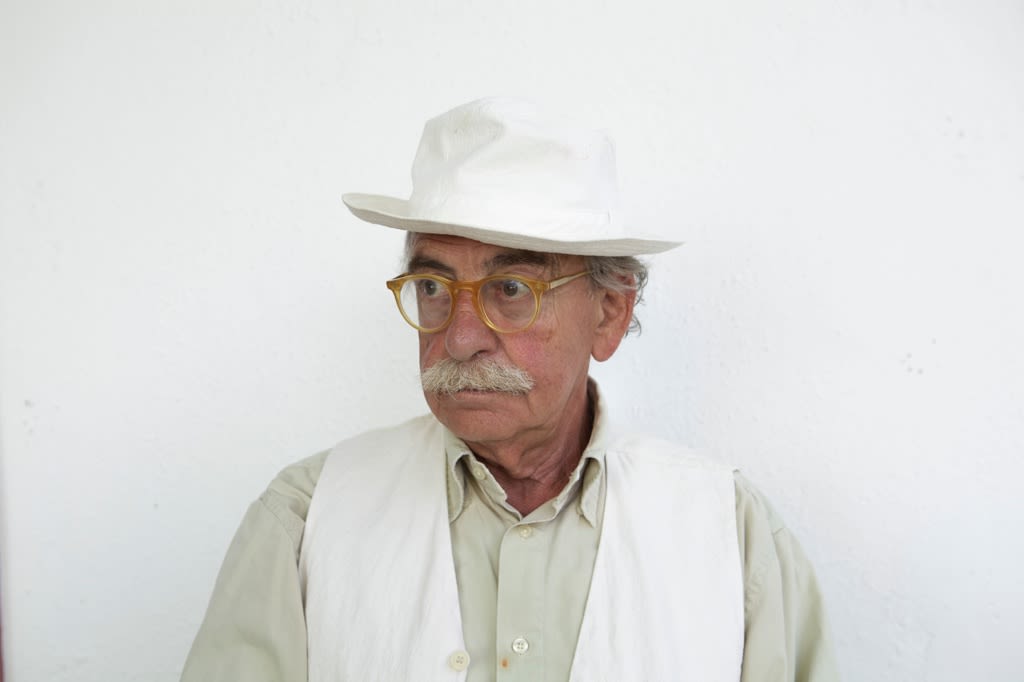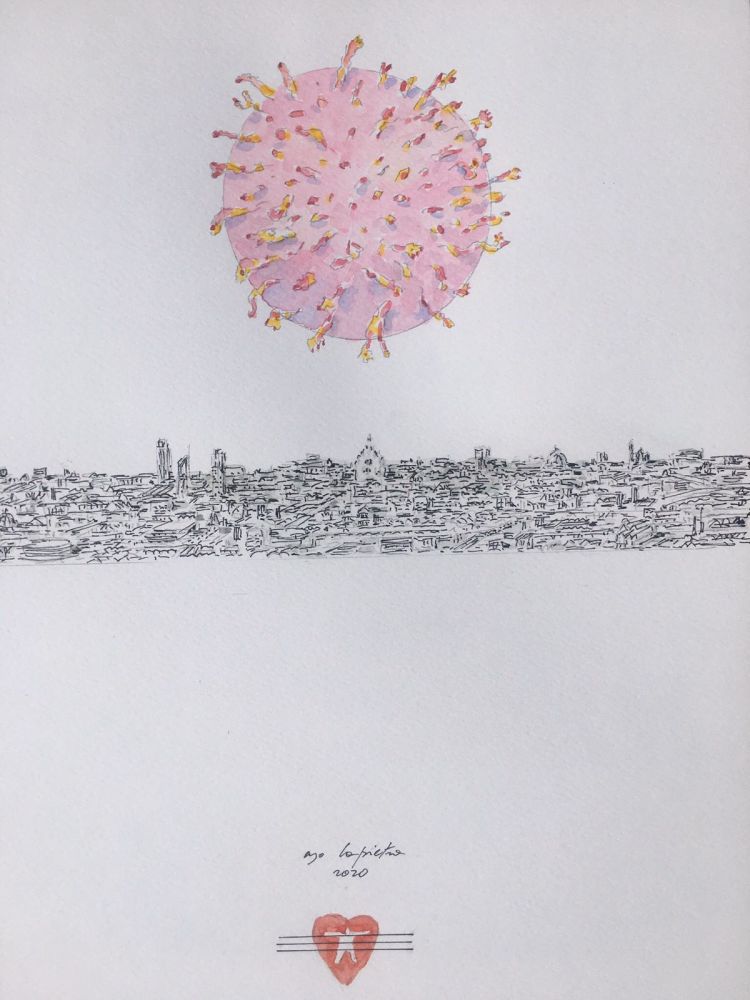
Ugo La Pietra is an artist, architect, theoretician and designer. We talked on the phone last Wednesday, after I humbly emailed him to ask if he would like to share with us his thoughts on the period we are living – while he was cooped up in the Ligurian hills, and I was I the ones in Friuli. He told me he has now lived every season of unbridled consumerism, starting from the time Ettore Sottsass curated the Triennale’s design section in 1973 and, influenced by radical architects, instructed exhibitors not to show any objects – so La Pietra produced a movie instead, The Great Occasion. He told me about his long and difficult journey in traditional craftsmanship, about how design had deleted the culture of making – which he tried to recover with Dalisi and Superstudio in the 1980s – and about the thousands of objects and hundreds of exhibitions he worked on, striving to highlight the value of local territories, from Abitare il Tempo to Abitare con Arte, all the way to the shows dedicated to the “genius loci”. He noticed how today, due to the pandemic, we are all reflecting a lot on market globalization: the same phenomenon – or, rather, cultural and production approach – that he tried to question throughout his career, to contrast the destruction of local territories, the massacre of entire animal populations, the exploitation of marine life. He told me about his trips around Italy to discover alabaster in Volterra, stone that is typical of Lecce, Carrara marble, Lavagna stone, open pit quarries in Salento, and about his latest books: Fatto ad Arte. Né Arte né Design and Argomenti per un Dizionario del Design. We talked about how we will depend on other markets after this painful phase, about how everything dramatically comes back again and again, and about an attempt to wake up that will once again be smoldered by our desire to binge on everything and everything. After this interesting and intense chat, he shared with us this reflection of his:

«I am over 80 years old, and before terror blocks my mind and freezes my brain, I want to remember a time when many claimed, ‘we can’t go on like this!’. It was after the first great wave of consumerism in the 1960s, which faded in protests and with a general awareness that society could not continue on its path of linear growth (as the 1972 energy crisis proved). We had to look for another way; society acknowledged its sins; many artists and architects became more radical and tried alternative solutions. But sacrifices, austerity and art for social change (such as what we saw at the 1978 Biennale) were not "bearable", and so we casually drifted into a second great wave of collective consumerism in the 1980s.
Euphoria and enthusiasm were high, and there was a great will to consume – that is, for few astute and privileged people to use resources.
This phase soon led us back to a general awareness that we could not go on like this, with greedy and corrupt politicians, national debt so high it imposed exaggerated taxes that made us all poor until recent times... and everyone said,"we can’t go on like this!".
We had to look for another way; society acknowledged its sins; artists, politicians and scholars talked about austerity, honesty, and the end of corruption.
But honest men, true care for the local territory and its resources (I tried to reinforce it with every exhibition I promoted in the 1980s and 1990s on the "genius loci") were not "bearable". And so, with great enthusiasm and the help of the Berlusconi age, we came to the third great wave of consumerism in the 2000s.
For a long time, we celebrated this time of great consumption, enabled by the opening of huge global markets, supported most of all by the Chinese dictatorship, which quickly took hold of almost the whole market.
The market was increasingly exasperated and diffused (the Silk Roads!); it exploited every possible resource far too much (with overfishing and intensive farming of plants and animals); people’s travel and the transportation of goods increased exponentially.
Finally, someone began to understand how globalization and high consumption combined: it was a killer cocktail that went far beyond the first wave of consumerism in the 1960s, or the second one in the 1980s.
Milano, Italy’s moral capital, celebrated consumerism with enthusiasm and euphoria: Chinese billionaires fueled luxury brands with daily shopping sprees; all design, fashion, art and communication schools – public, but most often private institutions – filled with students ready to pay higher and higher tuitions; the Chinese market flourished, in the only city in the world that had transformed a large portion of its center into a wholesale market: they were learning to use and take advantage of globalization, for people and goods alike.
Today, we have to learn to live with another burdensome phenomenon of globalization, which we see as “destructive”.
Many of us are already thinking about what will come after: ‘we won’t make the same mistakes again, we can’t go on like this!’.
Old people like me have heard that before, twice: ‘everything must change!’.
For a few years, many well-meaning people will try to change. But after this virus catastrophe we will all be poorer than before, and after a while we will grow tired of a life of sacrifices. Once again, Chinese businesses will probably be the ones fueling a new, big global market – possibly exploiting Africa’s people and resources as well – and will come to our help. Do you remember the aid from the United States that saved us from hunger after the war? We will receive so many (not good) things that will seem good, to the point we will fool ourselves into entering the fourth edition of consumerism, and the second one of global consumerism (diseases included).»